ECU 100 | Tales of an Outreach Instructor: Artist Polly Faminow Reflects on Her Years in ECU’s Storied Printmobile + Beyond
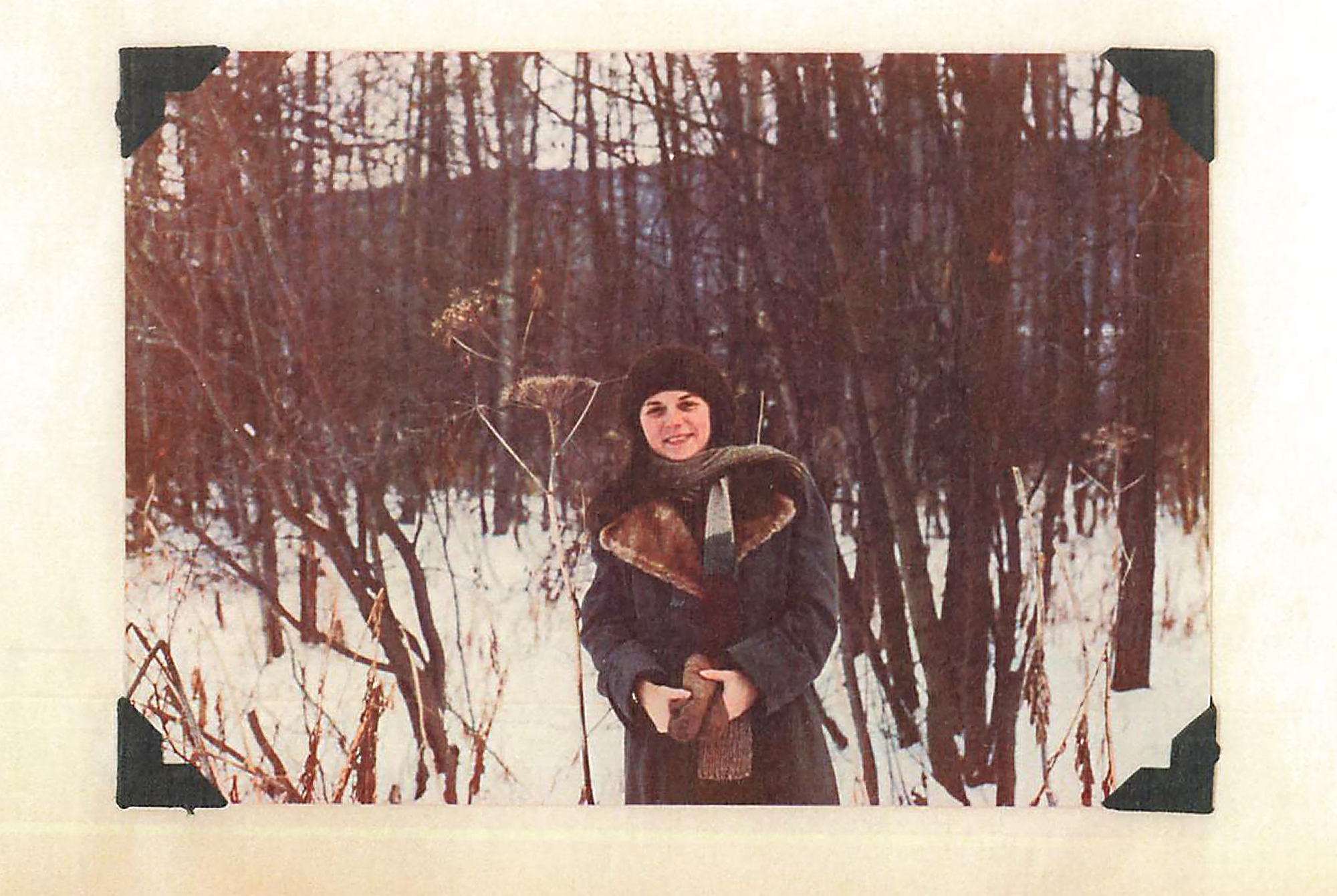
Polly Faminow in the Chetwynd / Moberly Lake area in 1981. (Photo courtesy Polly Faminow)
Posted on | Updated
The artist and educator looks back at her time helping lead one of ECU’s innovative programs for bringing creative education to communities across BC.
The drive up-island took far longer than expected. It was already 8 PM, and Polly Faminow’s contact, David Hudson, agreed with the gas station attendant who was replacing one of Polly’s tires — the road to Tahsis is best not attempted in the dark.
Located at the head of a narrow, fjord-like inlet on Vancouver Island’s remote west coast, Tahsis had been accessible only by boat or float plane until just a decade earlier. The new road was rough, and not for the faint of heart.
Heeding local wisdom, Polly decided to take refuge at the Peppercorn Motel in the village of Gold River, only to be kept awake through the night by a raucous black bear playing percussion on the tinplate trash cans.
David arrived first thing the next morning, leading an exhausted Polly on a “hair-raising” two-hour journey dodging countless yawning potholes along the 67-kilometre logging road to Tahsis.
Upon arriving in the village, the pair were greeted by Kendra Cosmor, principal of Captain Meares Elementary and Secondary School. Kendra introduced Polly to the maintenance worker who would help her get set up.
“One thing about Tahsis,” she recalls him saying, “nothing ever happens here.”
“But something did happen here,” Polly writes in her diary about that day more than 40 years ago, on Sept. 26, 1984. “A Printmobile arrived for a week.”
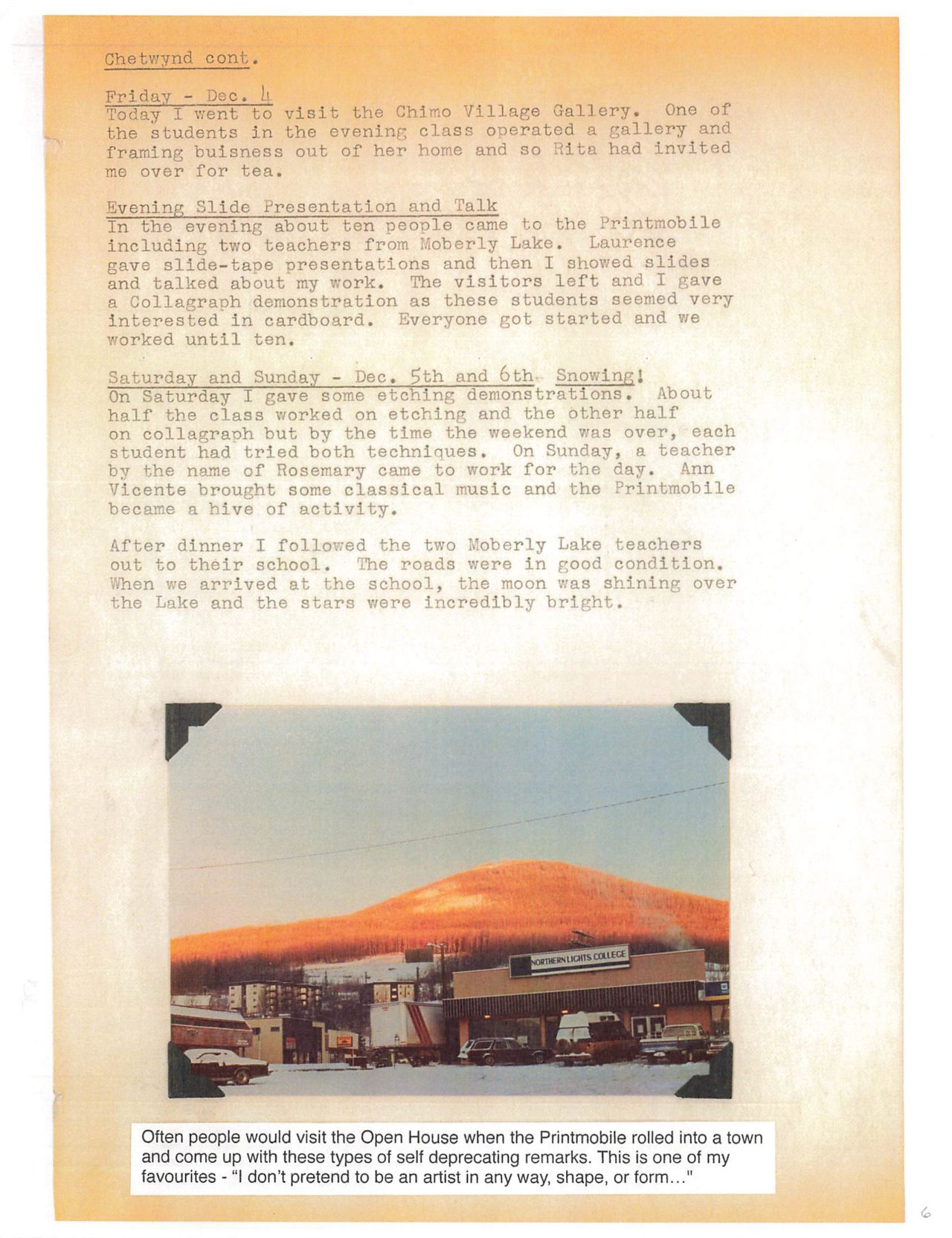
A typewritten page from Polly’s recollections of her time as an ECU outreach instructor. (Courtesy Polly Faminow)
From 1979 to 1985, Emily Carr University of Art + Design’s (ECU) storied Printmobile travelled more than 40,000 kilometres around BC, bringing printmaking experiences to over 68,000 young people and adults in 62 school districts and 130 residencies across the province. The mobile studio visited communities as far north as Atlin and Cassiar, as far west as Masset and Bella Bella, and throughout the province’s vast eastern, southern and central reaches, from Chetwynd to Merritt and Fernie.
As one of ECU’s innovative tools for bringing public arts education to the broader community, the Printmobile is featured in the exhibition En Route: mobile forms of art and education on view at the Libby Leshgold Gallery at ECU through Nov. 16, 2025.
The Printmobile’s history is one which underscores “the significance of artist-led classrooms and informal learning environments, and trace[s] their impacts and legacies across communities,” says Vanessa Kwan, Director + Curator, Gallery + Exhibitions at ECU.
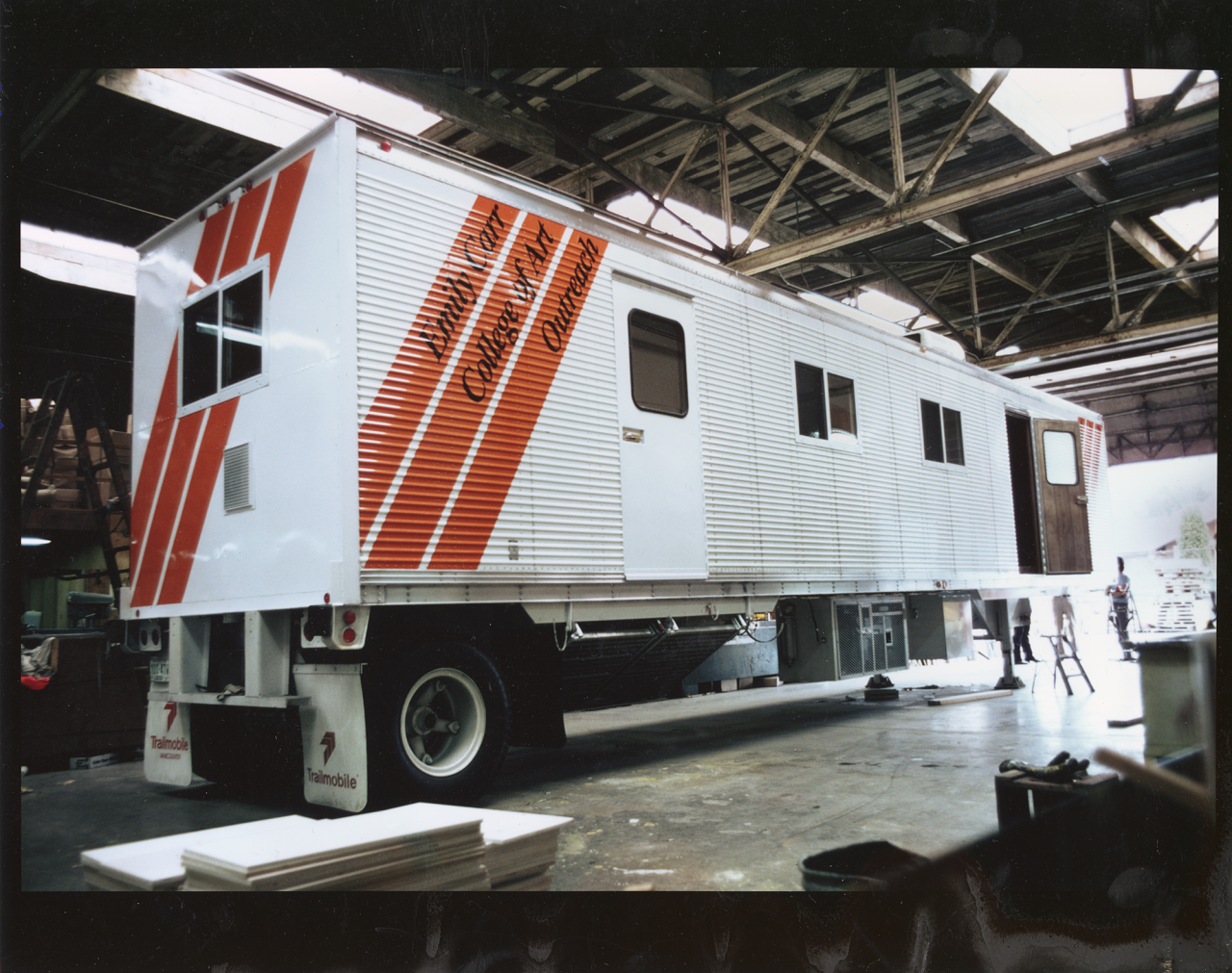
The ECU Printmobile in the garage. (Photo courtesy ECU Archives)
But if such a sense of purpose ever animated Polly’s own work as an outreach instructor, her entry into teaching was sparked as much by curiosity as anything else. Having graduated in 1976 with an Advanced Diploma in Printmaking from what was then called the Vancouver School of Art, Polly recalls wondering how best to advance her career.
In 1980, she took a job as a part-time outreach instructor for the recently renamed Emily Carr College of Art and Design. This decision would lead the artist and printmaker to nearly a decade-long career with ECU and many more years focusing on arts education for children and youth.
But her years in the Printmobile were spent engaging students of all ages.
In Tahsis, students from nearly every grade as well as their teachers took advantage of the Printmobile’s week-long visit. Polly showed videos, led them through demonstrations, shared collections of prints by previous students as well as samples of her own work, and then helped them create their first collagraphs and relief prints. Her students learned to mix coloured inks, print with and without the press, and experimented with materials including styrofoam, cardboard, string, tinfoil and textured tapes.
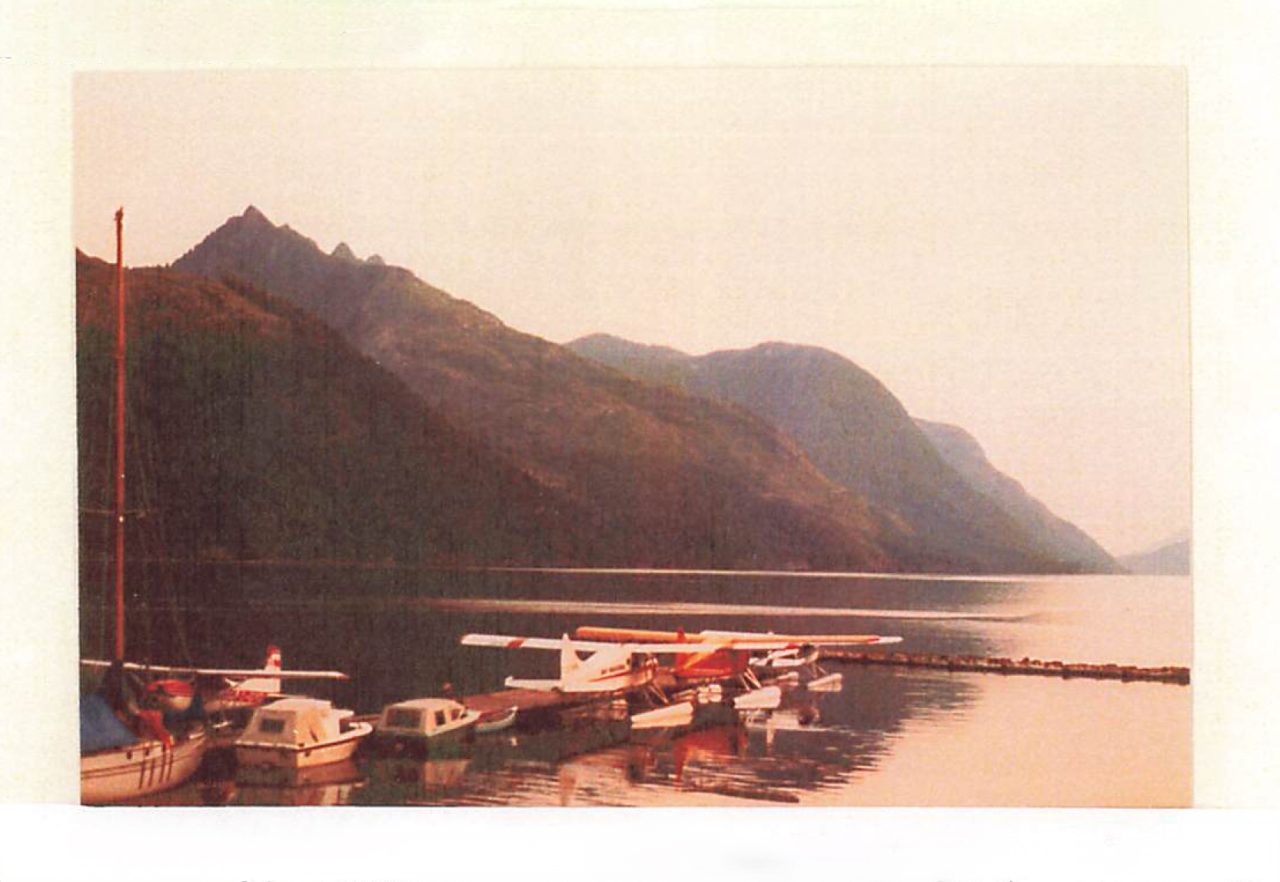
The Tahsis Inlet reflects autumn sunlight in 1984. (Photo courtesy Polly Faminow)
The younger children in particular were fascinated by the Printmobile itself, asking Polly whether she was the one who drove it, whether she slept in the trailer, and would it be coming back for another visit? Meanwhile, the early autumn sunsets beamed down on the float planes and fishing boats in the village’s marinas, making a mirror of the inlet.
Polly would make a total of 44 trips as an ECU outreach instructor to many communities like Tahsis. In Chetwynd in late November 1981, she and fellow ECU alum and printmaker Lawrence Lowe (alum 1978) taught collagraphy and intaglio techniques such as etching and engraving to locals, including students, gallerists and teachers.
As early-December snow fell in the eastern foothills of the Rocky Mountains, Polly was invited for the weekend to nearby Moberly Lake where she slept on a hide-a-bed in the local school and awoke to “the clearest and brightest blue sky I’ve ever seen.” She taught children as young as five to create pictographs by rubbing graphite on rice paper over cardboard shapes and learned about the area from residents over wild-rice chicken casserole and blueberry pie.
That same year, during one of Polly’s first week-long Printmobile residencies, she met Sybil Andrews, then in her eighties, who worked at the tables in her modest Campbell River living room in preparation for an exhibition at the Vancouver Art Gallery which would bring her to international attention in her twilight years.
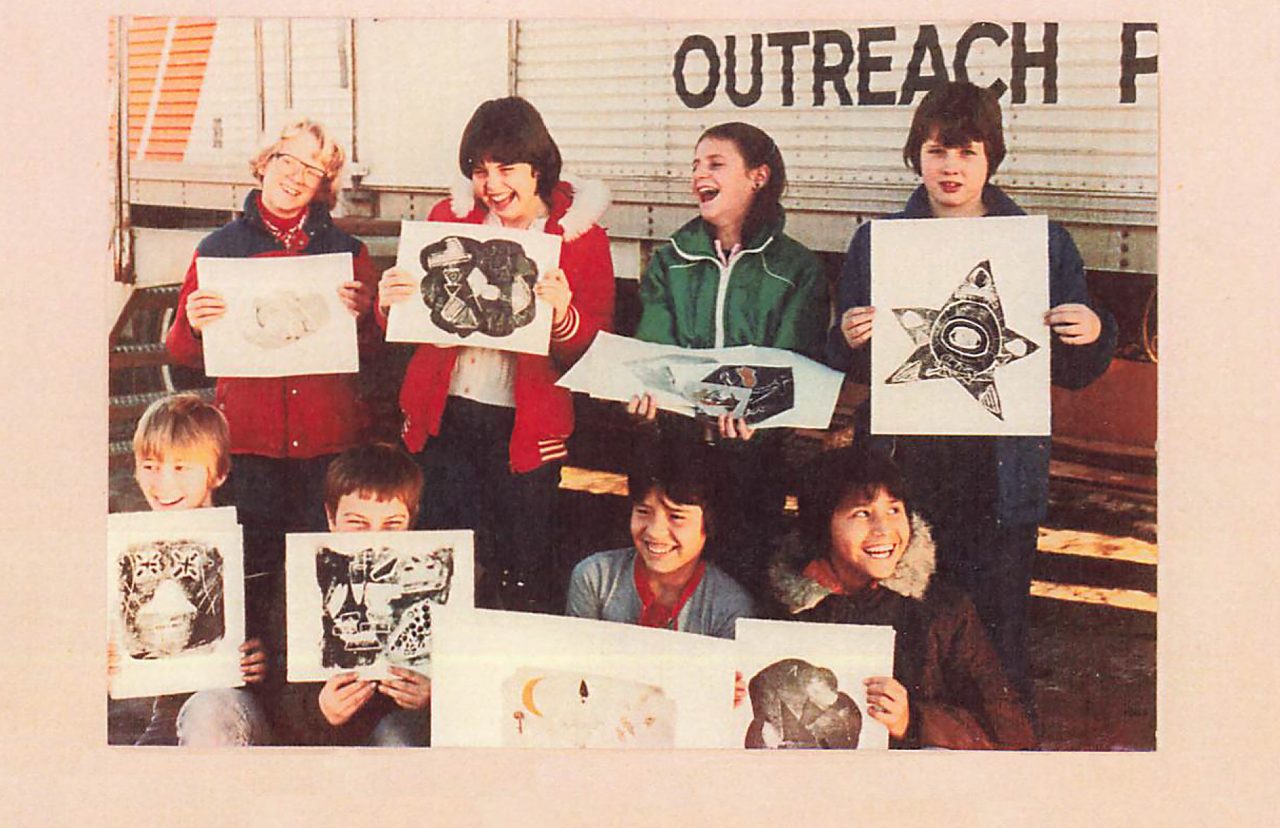
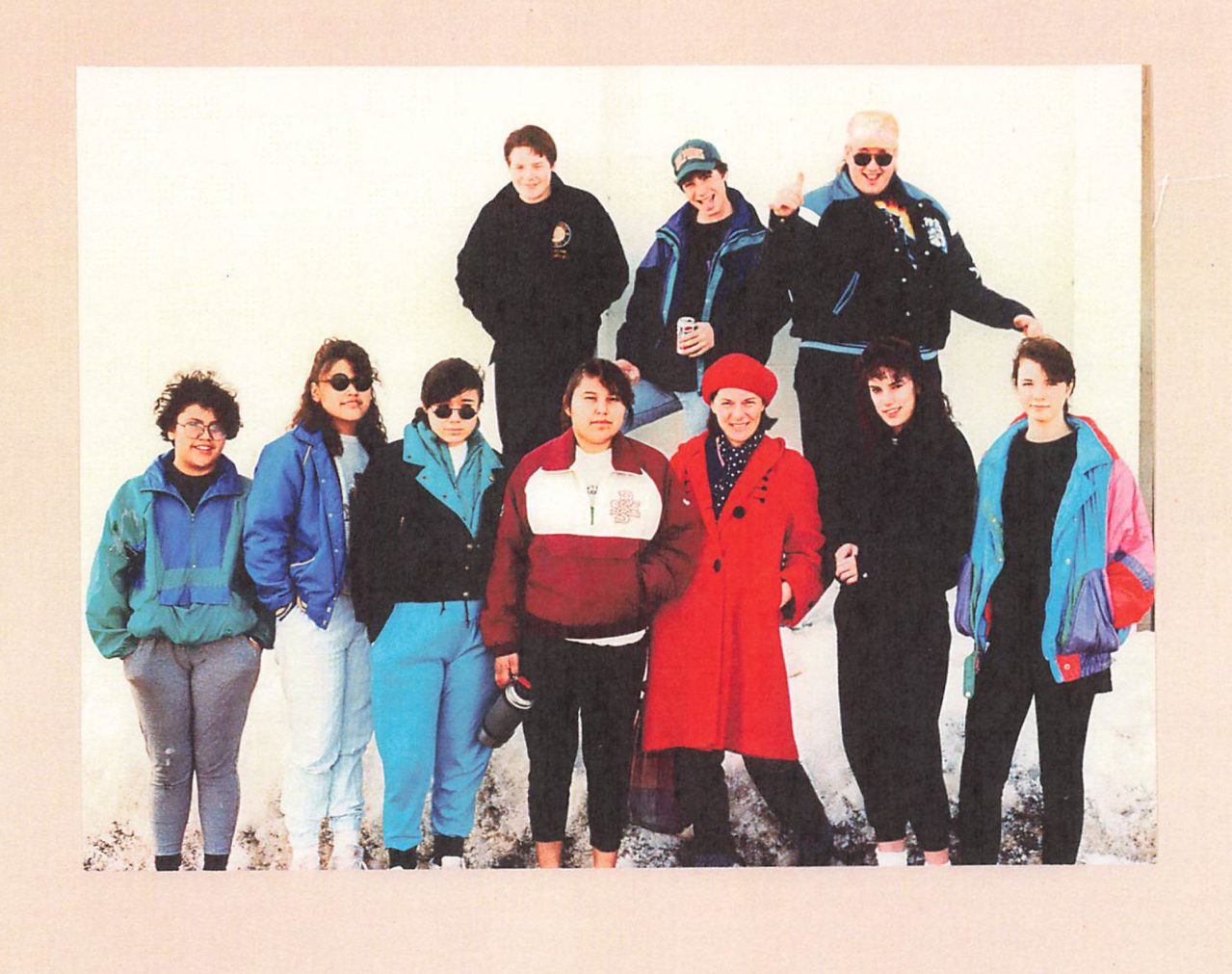
Top: Some of Polly's Moberly Lake students with artworks created in the Printmobile. | Polly (centre right, in red) with some of her students. (Photos courtesy Polly Faminow)
At each stop, the Printmobile facilitated Polly’s lessons about an artistic medium many students had never before experienced. But these engagements helped Polly see her own practice more clearly as well.
“In the Printmobile I learned that prints of quality could be made within a very limited timeframe,” she says. “This was one of the biggest shifts I made, because in art school I would spend countless hours creating a single edition of prints. On the road I had to adapt to a different way of doing things. I became very experimental in my approach and learned later to apply these discoveries to my own art practice.”
The Printmobile completed nearly six years of touring on June 14, 1985, in the West Kootenay boundary community of Grand Forks, BC, along the province’s southern border. But Polly continued her work as an ECU outreach instructor for many years, delivering arts education to communities across the province.
Polly would eventually organize the exhibition of some of her students’ work in Children As Printmakers at the Surrey Arts Centre in 1992-3. She later went on to work with children in arts organizations including the Shadbolt Centre for the Arts, developing approaches that brought inspiration to both young and adult learners — including herself.
“I have taught what I’ve needed to learn, which is to play more, and experiment as much as possible,” she says.
Polly now lives in White Rock, where she maintains a practice as a mixed-media artist. Visit her webpage to see more of her work.